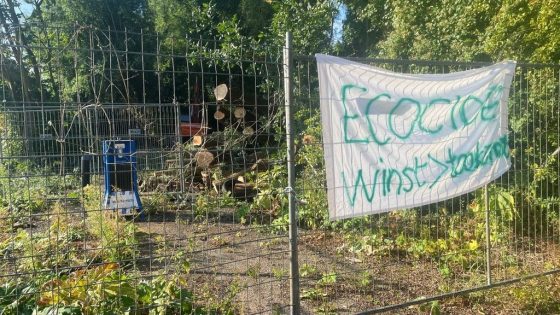The controversial cutting of the Betonbos in Groningen has been halted. On August 27, 2025, sightings of squirrels prompted immediate action. How will this impact local wildlife?
- Protest against Betonbos tree felling in Groningen
- Province halts logging due to protected species
- Betonbos spans 16,000 square meters of trees
- Residents argue forest mitigates heat stress
- Court previously allowed logging under permits
- Activists arrested during protest actions
Residents are concerned about the ecological effects of this decision. The Betonbos is home to various species and plays a crucial role in the urban ecosystem.
Groningen’s Betonbos Controversy Highlights Urban Ecology Importance in the Netherlands
What does the halt of the Betonbos cutting mean for urban wildlife? The decision reflects growing concerns about ecological preservation amidst urban development. Local residents advocate for a balance between housing and nature.
How can we ensure that urban development respects nature? The situation in Groningen serves as a reminder of the delicate balance between growth and ecology. Key points include:
- Protecting local wildlife habitats is essential.
- Urban forests help mitigate heat stress.
- Community activism plays a vital role.
- New housing must consider ecological impacts.
The Role of Urban Forests in Groningen’s Ecology and Community
Urban forests like the Betonbos provide critical habitats for wildlife. They also contribute to the overall health of the city by improving air quality and reducing heat. The ongoing debate highlights the need for sustainable urban planning.
Community Response to Betonbos Cutting and Its Ecological Significance
Local residents have mobilized against the Betonbos cutting, emphasizing its ecological value. Their activism showcases the importance of community involvement in environmental issues, particularly in urban settings.
Stay informed about developments regarding the Betonbos and advocate for sustainable urban planning in your community.










